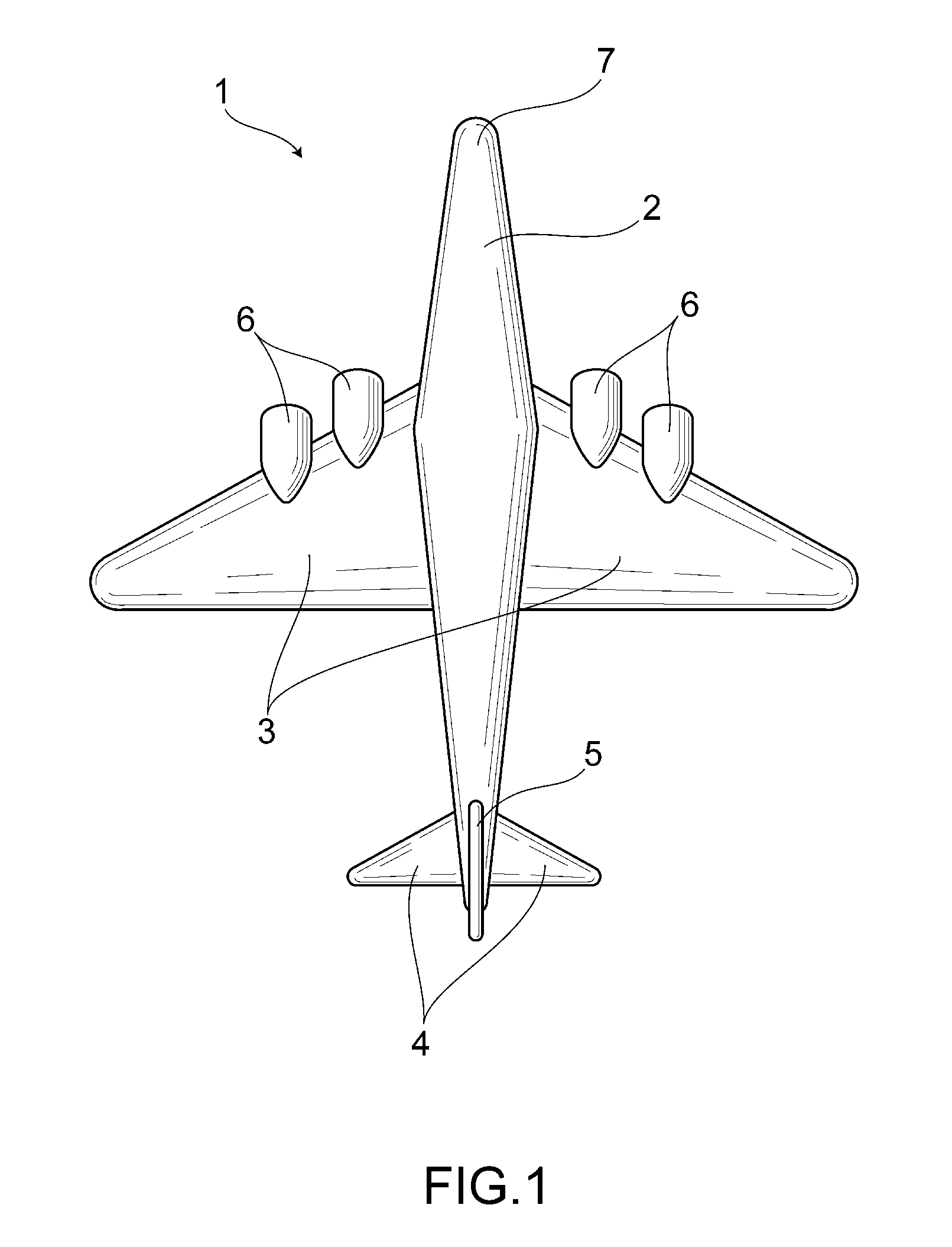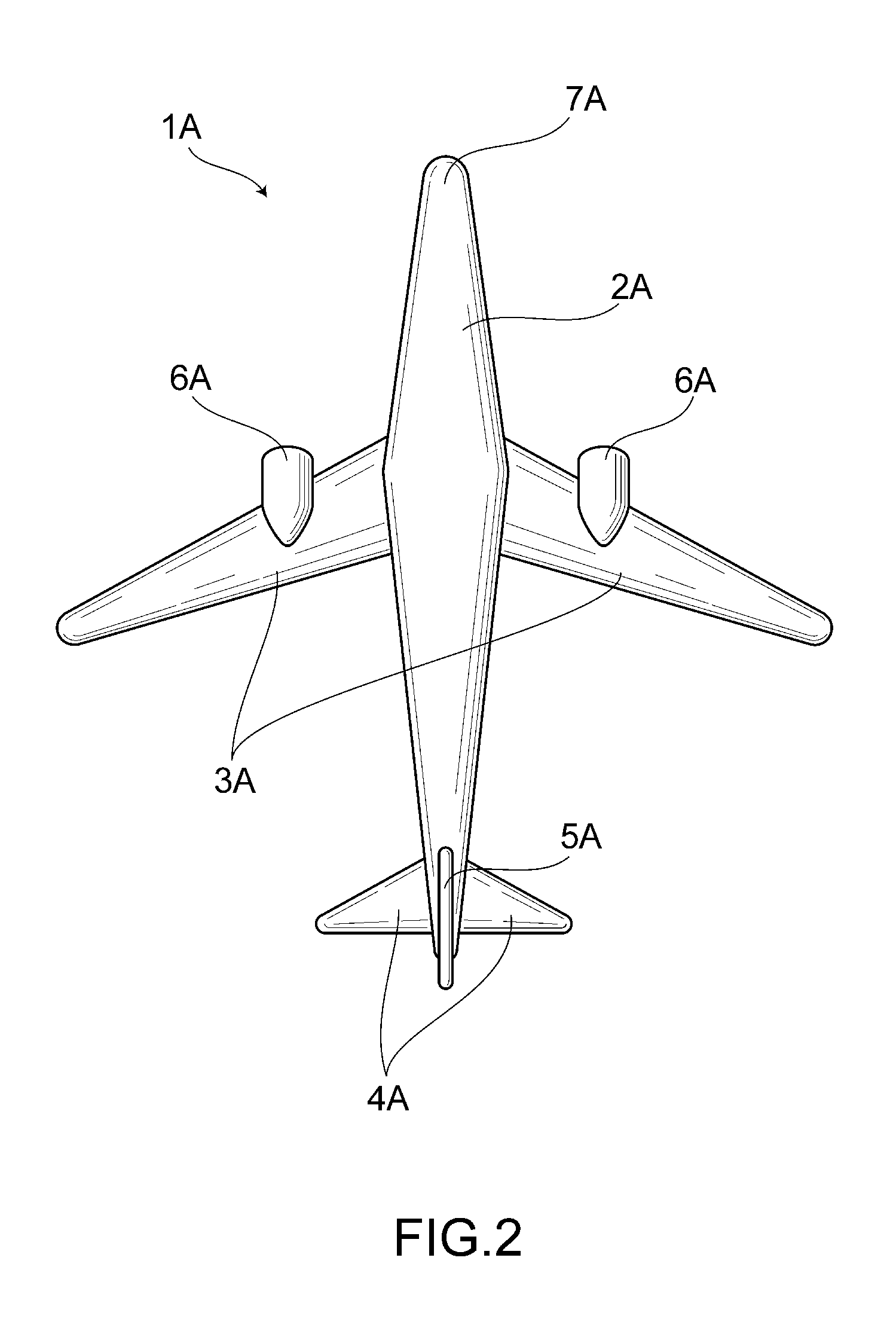Method of flying an aircraft
a technology of aircraft and wings, applied in the field of aircraft flying, can solve the problems of difficult high-speed flying for conventional aircraft, easy impact on conventional aircraft, and inability to fly at high speed, so as to reduce the duration of flight, reduce the effect of fuel consumption during descent, and allow the reduction of fuel consumption
- Summary
- Abstract
- Description
- Claims
- Application Information
AI Technical Summary
Benefits of technology
Problems solved by technology
Method used
Image
Examples
Embodiment Construction
[0022]Preferred embodiments of the present invention are described with reference to the accompanying drawings. However, the embodiments described hereunder shall not limit the contents of the present invention that are found in the scope of claims. Further, not all elements described hereunder are necessarily the essential elements of the present invention.
[0023]An embodiment of the present invention will be described hereunder with reference to FIGS. 1 to 3.
[0024]FIG. 1 shows an aircraft 1 according to one embodiment of the present invention. The aircraft 1 comprises a fuselage 2, primary wings 3 attached to the lateral sides of the fuselage 2 and provided in about a middle portion in a front-rear direction of the fuselage 2, tail-planes 4 attached to the lateral sides of the fuselage 2 and provided in the rear of the body 2, a vertical tail 5 attached to the upper side of the fuselage 2 and provided in the vicinity of the rear end of the fuselage 2, and engine(s) 6 serving as dri...
PUM
 Login to View More
Login to View More Abstract
Description
Claims
Application Information
 Login to View More
Login to View More - R&D
- Intellectual Property
- Life Sciences
- Materials
- Tech Scout
- Unparalleled Data Quality
- Higher Quality Content
- 60% Fewer Hallucinations
Browse by: Latest US Patents, China's latest patents, Technical Efficacy Thesaurus, Application Domain, Technology Topic, Popular Technical Reports.
© 2025 PatSnap. All rights reserved.Legal|Privacy policy|Modern Slavery Act Transparency Statement|Sitemap|About US| Contact US: help@patsnap.com



